Going back to camcorders. I am especially exited about this model because of its look and how it operates, as well as the fact that it records videos on VHS tapes.
Camcorders are one of the most
important inventions of history documentation (see Philips VKR6847 Explorer
Camcorder post for more information) as well as inspiring new filmmakers in the
70s, 80s and 90s to learn and create amazing pieces of film art. It caused an
electronic revolution to capture memories in the form of home videos, allowed
amateur filmmakers to teach themselves and experiment with different filming
techniques in transferring from the old 8mm and Super 8mm films.
As V2DT (2021) writes:
“Having access to filming
equipment meant that not only did people now have the ability to capture
personal memories on film, but filmmakers had the chance to practice their
skills and create content with ease in the comfort of their own homes.”
And that, “It required almost
no technical skill, which is why the VHS tape was so attractive to the public
in the late 1970s. By the mid-1980s, VHS tapes were found in most homes and
used to store home movies and record television. Television and movie
production companies also used the technology as a brand-new revenue stream –
giving film fans the option to purchase movies they saw in the cinema to watch
at home.”
With camcorders being more
inexpensive than what the mainstream film production companies where using, it
made it easier for aspiring filmmakers to create, mass produce and sell their
own films. Although, I am sure most of these films ended up being memed on by
YouTube movie reviewers.
VHS camcorders also inspired
many film genres, such as Found Footage films and continue today to help
enhance and inspire new ways of filming horror films.
“Modern cameras have embraced
the concept of high dynamic range, high resolution, and perfect colour
reproduction. So much so that it feels like looking through a window when we
watch movies. But when using these tools to try and capture the nostalgia of
the 80s and 90s, creative film makers always have a hard time finding the
grunge of those eras when their initial composition is too clean. Cinematographer Alexander
Chinnici and the team behind the V/H/S/85 “wrap
around” "TOTAL COPY," decided the best way to dirty up the
frame, was to go back in time. Directed by David Bruckner, "TOTAL
COPY" used the unique approach of shooting on 40-year-old analog cameras
and quite literally flicking the magnetic tape of a VHS cassette to get the
effects they wanted.” (NSF Staff 2023)
The use of camcorders isn’t
just for horror filmmakers, but anyone who wants to find new ways to tell their
story, evoke an emotional response or capture a certain look. As Altunin (2022)
writes, that it is all about the aesthetics and how you want to use them.
Altunin (2022) points out that there are filters that modern filmmakers can
use, but it will never be just right or capture that nostalgic feeling.
“We’re not saying you should
throw out your modern gear and start shooting on old relics, but there’s a
certain mood that you can only get from old technology. If you’re trying to
emulate the past, why not shoot with the past?” (Altunin 2022)
Now time to get back to the object for this post, the Panasonic National NV-M5 Camcorder.
Firstly, at look at the
company’s history, Panasonic.
The company name had many
changes over the years. First the Matsushita Electric Housewares Manufacturing
Works (1918), then Matsushita Electric Manufacturing Works (1929) and by 1935, Matsushita
Electric Industrial Co. Ltd. Then in 2008 it changed to the name of one of its
most popular brands: Panasonic. (Panasonic Group)
Panasonic was one of Matsushita
Electric Industrial Co. Ltd.’s brands that appeared in 1955 on a sound speaker
for their export market. The name came from Sonic (meaning sound) and Pan
(meaning universal). (Panasonic Group)
But interestingly, this
camcorder isn’t technically Panasonic, but falls under the branding of
National. A brand name that came into being in 1927, when Matsushita invented a
new bicycle lamp. He came up with the name when “he came across the English word
"international" in the newspaper. Looking up the definition in the
dictionary, Konosuke saw that within "international" was the word
"national", meaning "of or relating to the people of a
nation". This struck him as perfect for a product that he believed every
household in the country would one day be using.” (Panasonic Group)
The National brand name would eventually be abandoned at the end of 2010 and all products will be branded with the Panasonic name. “While the company was using 'National' and 'Panasonic' brand names over the period, it decided in 2003 to unify a global brand into 'Panasonic' with a brand slogan 'Panasonic ideas for life.' The timing to change the company name and unify its global brand coincides with its 90th anniversary this year. At the same time, some group companies which currently use 'Matsushita' or 'National' in their names will also change their company names using 'Panasonic.' Together with the brand unification in Japan, the company will lead all its resources and activities to enhancing the value of 'Panasonic' brand.” (Panasonic Group)
Panasonic’s first VHS
camcorder was the National NV-M1 in 1985 (Panasonic Group), which appears to be
the first of the M series of VHS Movie camcorders.
 |
| National NV-M1 1985. Image Source: https://holdings.panasonic/content/dam/panasonic/phd-global/en/corporate/about/history/chronicle/img/inp1985.jpg |
Now for the Panasonic National
NV-M5 Camcorder, or more accurately (from what is in the company’s history),
this camcorder should be named the Matsushita Electric Industrial Co. Ltd. National
NV-M5 Camcorder, but for my own sanity and ease of typing, I will refer to it
as the NV-M5.
The year of production of the
camera is anywhere in the late 1980s, as evident of the release of the NV-M1 in
1985. Another piece of evidence points out that it is more specifically
released and manufactured between 1986-1988 (Radiomuseum). But I suspect that
this camera is an earlier model or maybe even the model first released in Japan
because unlike the other NV-M5s I found on the internet, the name Panasonic
doesn’t appear on the camcorder, instead everywhere it says Panasonic on other
camcorders, on this particular model has the name National. And as mentioned
above, National was the brand name used for products to sell in Japan and
Panasonic was international. Although this can be debatable...
 |
| NV-M5 Prop for hire. Image Source: https://www.aliashire.co.uk/wp-content/uploads/2022/05/Panasonic-M5-VHS-Movie-Camera-Prop-for-hire-1.jpg |
But none the less, this makes
this NV-M5, more unique and possibly part of the first batch to be released in
1986.
The NV-M5 is also quite
popular. According to Academic: “The Panasonic NV-M5 is a VHS recording camcorder, first launched in 1986. As one of the first camcorders to record directly onto VHS, the M5 enjoyed commercial success throughout the late 1980s at a time when VHS was becoming increasingly established as the home video format of choice for consumers. Unlike other cassette types such as Hi-8 and VHS-C
cassettes recorded on the M5 Could be played directly in a conventional VHS
VCR, without the need for an adaptor or connections between the camcorder and
television.”
The NV-M5 camcorder came with
some accessories, which fortunately this NV-M5 has, but also unfortunately is
missing a few (I say a few, but in actual fact all) of the key accessories.
.png) |
| Page 11 of the NV-M5AM Manual. |
Let’s start with what this NV-M5 has. First is the carrying case, made from hard plastic and has protective padding on the inside and compartments for the camcorder and other accessories.
Second, the battery pack,
which is a VW-VB30E 12v battery, that is charged with a clip charger. Third, is
the VHS tape, but I will go in more detail later.
Fourth is the pause remote
control unit, which is used to remotely start and pause a recording from a
distance. Fifth is the AV adaptor, to watch on TV or through a VCR or used
today to convert the VHS footage to digital.
Lastly, is the earphone, that
is plugged in to the earphone jack and can only go in one ear, most likely for
convenience. Think about it, if you are on set and just want to review the
footage, it would be a lot of hassle to take out headphones and put them on or
having to individually put each earphone piece in both ears, while holding the
massive NV-M5.
Now for what is missing. First
is the most important parts: the AC adaptor, battery pack charger and car
battery cord, meaning that this camcorder can’t be switched on or powered up. Other
missing pieces are the Coaxial cable, batteries for clock display (easily
replaceable), line adaptor and shoulder strap (which is just lost at the
moment…) and lastly the manual.
The camcorder has many
interesting and useful features, such as its electronic viewfinder. The
viewfinder shows the basic indications, like battery life, white balance stings
for indoor and outdoor shoots, brightness, shutter speed and also has built-in
warning systems. These warning systems let the user know if the battery is low,
stops the user from recording if the tape erasure prevention tab isn’t intact,
as well as warns the user if there is dampness or water in the tape or tape
compartment.
The viewfinder can also be
moved around depending on if it is on a tripod or being carried on the
cinematographer’s shoulder for easy accesses and convenience. There is also a
removable eyecup. The eyecup is used by cinematographers to comfortably look
through the viewfinder. This eyecup can be lifted up, for if the
cinematographer has it on a tripod and wants to view what’s being shot from
afar. It also has a slider to help widen or narrow the image.
The NV-M5, like the Philips
VKR6847 Explorer Camcorder, also has a built in VCR to review the footage shot
and also like the Philips VKR6847 Explorer Camcorder, it has a slider to cover
the play, fast forward, rewind etc. buttons when recording. But the NV-M5 has
an extra feature with these buttons and that is the Audio Dub. This is to dub
over audio in the footage, with the use of an external microphone.
Then on top of the camcorder
are all the settings before the user shoots.
The NV-M5 has an Edit switch.
This “refers to the process of shooting your program sequentially–each scene
shot in order, and at the length that it will appear in the finished program–so
that you have a complete program as soon as you are done taping. While it is
useful in just about any shooting situation, in-camera editing is really
effective when shooting an event, i.e. something that you already want to shoot
in sequence. In-camera editing is ideal for weddings, birthday parties and the
like.” (Videomaker 2024)
There is also a Tracking tool
in the form of a wheel. This is to help clear up distortion. Then there is the
counter, which has two functions, reset and memory. Reset, is self-explanatory,
whereas memory is used when the user wants to find a specific scene. Once it is
found the user presses the memory button, this is to help the user wanting to
watch the scene and then if they want to re-watch it, then memory will help
them rewind to the start of that scene. There is a time and date setting, that
can be switched on and off. The time and date have a separate battery
compartment.
Now for the buttons that are
set for the shoot.
First is the Focus, that can be switched between manual and auto. It also has a Push-Auto button that when pressed it automatically adjust the focus, for as long as the user holds the button in. Second is the White Balance. This can be switched between an Outdoor setting, Indoor setting, or the user can leave it up to the camcorder and put it on auto.
Third is the Date, where the user chooses to display the time and date, or just the date or they could just switch it off.
Fourth is the High Shutter
Speed setting, that can be turned on or off. Then lastly there are the Back
Light and Fade buttons. The Back Light button can be held in to help compensate
for the lack of backlighting and Fade, like the Philips VKR6847 Explorer
Camcorder, gives the footage a fade-in or fade-out affect for that added
cinematic flare all home videos need.
Above these buttons are the Stand By and Rec Review buttons. Stand By is used to help save battery, when not recording and the user doesn’t want to switch off the camera. The Rec Review is used to watch the footage while the recording is on pause.
The lens is a TV lens 9-45mm,
with a manual focus ring and a zoom lever, that can easily switch between a
wide and telephoto shot. This lens is also a macro lens, which allows it to
shoot small objects. Zooming can also be done with two buttons, on the side for
Power Zooming, without using the lever.
The NV-M5 has a built-in
microphone, but also has an external port of an external microphone. This is
needed for the Audio Dubbing feature.
To learn more about these
features, you can find the manual here:
https://www.manualslib.com/manual/542707/Panasonic-Nv-M5am.html
As mentioned above the NV-M5
is powered by either a battery pack or an AC adapter and turned on by a switch,
labelled Operate.
This is needed to open the
tape compartment, with the eject button. This camcorder records on VHS tape,
which is mentioned in the Philips VKR6847 Explorer Camcorder post, but here I
will go deeper into the history and how it works.
The VHS tape was in development in early 1970s and released in 1976 (ScanCafe 2020).
As Shannon writes:
“Eventually JVC made
improvements to the VHS and released the S-VHS, or Super VHS. This iteration of
the device came with improved video bandwidth, making it a popular choice for
the camcorder market. Maybe you remember or even had one of those magnificent
early camcorders that held an entire full-size VHS cassette! They
were massive over-the-shoulder cameras that looked destined for a news studio
rather than your family vacation. Again meeting a need, JVC later released
the VHS-Compact, or VHS-C, in keeping up with the ever evolving camera
industry. Although the VHS-C was originally developed as a device for portable
VHS players, the market thrived as palm-sized video cameras became the
standard. As the tech grew, the hardware shrunk. Finally, the Digital
Versatile Disc, or what we now know as the DVD displaced the VHS, due
to DVD’s superior quality capabilities. In 1995, big names like Apple and IBM
came together to demand a single format, which encouraged Phillips and Sony to
shake hands and adopt a standard format that could be used in all computers.
DVD went on sale in 1996 in Japan but took until 2003 to become a household
name in America, where it became the go-to format moving forward until Blu Ray
and streaming took over in the late 2000s/early 2010s.”
Now for an explanation of the VHS
tape/camcorder. I touch on it briefly in the Philips VKR6847 Explorer Camcorder
post, but here I will go in more depth.
First a quick excerpt from
Shannon’s article:
“A relatively simple looking
device, the VHS was designed to prevent unspooling. The cassette
contains two small spools of magnetic tape, including the supply reel and the
take-up reel. Beginning-of-tape and end-of-tape sensors prevent the tape from
potentially unspooling itself inside the VCR. Regulations for magnetic tape
were actually much thinner than what came out of production. Most magnetic tape
was produced at thickness higher than regulation called for to prevent breaking
and tearing in the tape.”
And that the “thinnest
acceptable width for playback, a VHS cassette can hold about 1,140 feet of
tape (nearly four football fields), and about 4 hours of footage. At
either end of the spool, clear tapes provides a signal to the VCR that the end
of the tape is near. Making cassette tapes with plastic produced a nice,
lightweight product that could store hours of footage without the heavy film
reels of the past. The entire cassette is 187 mm wide, 103 mm deep, 25 mm
thick. The device is screwed together with 5 miniscule philips head screws.”
.png) |
| Inner workings of a VHS, by Jens Peterson. Image Source: https://kodakdigitizing.com/blogs/news/inner-working-of-the-vhs-tape |
The VHS tape also consist of (according to Lui 2024):
“the top of the cassette,
looking through the reel windows. The left reel is the supply reel, the right
reel is the take-up reel…” with an arrow that shows which way to insert it.
“…a hinged flap which protects
the top surface of the tape during transport.”
On the other side: “…of the
cassette is a collection of holes. The two large circular cutouts allow for the
driving tangs to engage with the teeth in each reel. There is a reel lock which
prevents the reels from turning freely and loosening tape during transport
which is disabled once an object penetrates the hole in the middle.”
This middle-upper hole “allows
for an end-of-tape sense light to enter the cassette. Likewise, the top
cut-outs allow for the capstan and pinch roller and two guides to enter the
cassette and pull the tape out into the machine.”
To tell how long the VHS can
record is to look at the bottom of the tape. In the example in this post we
find E-180 written. The 180 revers to the length and according to Skears
Photographic (2024), this means it can record up to three hours, so from this
we can deduce that the 180 refers to minutes.
This tape is covered in an
oxide-coated mylar film and like cassette tapes works with magnets (Hall
2024).
The process of how a camcorder
records onto the VHS tape is interesting. So to make sure that it is explained
in a precise and short manner (rather than my over explanation and pointless
ramblings) I will show and excerpt from Videomaker (2024):
“When you slide your favourite
movie or a blank cassette into the VCR, a number of things happen. The
protective flap on the video cassette opens, and when you hit play or record,
two slim, smooth pins called loading pins slide up behind the tape and pull it
into the VCR’s mechanism. Rollers and guide pins gently press the tape against
a series of heads located on the VCR’s head drum. These various heads
alternately erase, record or play back the audio and video information
depending on what buttons you press on the front of the deck. Let’s look at
what the tape does on its journey through the system. In a standard VHS VCR or
camcorder, the tape first encounters the full erase head. When you press the
record button, this head erases the tape as it passes across it. The tape is
now ready to record a new signal. After erasing the tape, it then wraps part
way around the spinning drum found at the centre of the VCR. This drum contains
all or some of the following: video record and playback heads, stereo audio
heads and a flying erase head. Remember helical scan? As mentioned before, the
drum is spinning at a high rate of speed at a very precise angle. The tape
passes across this slanted drum creating a pattern called a helix. This helical
scan is the secret to how VCRs and camcorders can record so much information on
a relatively short tape. Because the tape runs across the drum at an angle, the
recorder can lay down more and longer parallel tracks. This gives the record
and playback heads the chance to read or record onto the slim diagonal strips
provided. As the drum spins and the tape feeds over it, it records or plays
back the video, and in some formats, the audio information. In the VHS family,
the tape then passes across two fixed heads, stacked one on top of the other.
These two heads are the linear audio record head and the control track head. If
your VCR is capable of dubbing linear audio, the tape will pass a linear audio
erase head before it gets to the audio record head. The final major part of the
tape transport system is the capstan. This slender metal post rotates at a very
consistent and precise speed. A rubber roller presses the tape against the
capstan so that when it spins, it pulls the tape along through the mechanism at
a constant rate. From there, the tape then goes to its take-up reel.”
For more specific information,
please check out YSU’s paper The Video Cassette recorder. It is very
interesting and goes into more specifics. Link:
https://fowens.people.ysu.edu/ElectronicTechforConsumers/VideocassetteRecorder.htm
Also check out Brain, M’s 2023
article How VCRs work. Link:
https://electronics.howstuffworks.com/vcr2.htm
What a post, and I thought the
last one (Sanyo Memo-Scriber TRC9100 cassette player/recorder post) was a lot,
but this one takes the cake, but still fun and interesting. The NV-M5 is an
interesting piece of film technology history and one of the crown jewels of
this online museum/blog.
Thank you for making it to the
end and I hope you enjoyed it as much as I did
researching it.
If you want to help this site out, please consider joining my Patreon: patreon.com/OnlineCurator
Please see the Please help this site post on this blog, for more information.
List of sources:
Academic. Panasonic
M5. https://en-academic.com/dic.nsf/enwiki/3495026
Altunin, Y. 2022. Why
Filming on a 20-Year Old Camcorder Can Be a Good Idea. https://nofilmschool.com/20-year-old-camera
Chris. 2023. A
Brief History of VHS Tapes. https://dvdyourmemories.com/blog/a-brief-history-of-vhs-tapes/
Hall, M. 2024. What
is a VHS Tape and How Does it Work? (Explored). https://www.sancanational.org/what-is-a-vhs-tape-and-how-does-it-work-explored/
Lui, G. 2024. Intro
– Inside the VHS Cassette & VCR. https://goughlui.com/the-vhs-corner/intro-inside-the-vhs-cassette-vcr/
NFS Staff. 2023. This
‘V/H/S/85’ Story Merged Horror With Nostalgia Using 40 Year Old Cameras. https://nofilmschool.com/vhs85-analog-cinematography
V2DT. 2021. How
the Invention of the VHS Tape Changed the Film Industry. https://www.video2dvdtransfers.co.uk/blog/2021/10/27/how-the-invention-of-the-vhs-tape-changed-the-film-industry/
Panasonic Group. Brand
History. https://holdings.panasonic/global/corporate/brand/history.html
Panasonic Group. Company
name change from Matsushita Electric Industrial Co., Ltd. to "Panasonic
Corporation" and corporate brand unified as "Panasonic"
worldwide. https://holdings.panasonic/global/corporate/about/history/chronicle/2008.html
Panasonic Group. First
use of the National brand: in 1927 at age 32. https://holdings.panasonic/global/corporate/about/history/konosuke-matsushita/story2-03.html
Panasonic Group. Innovative
Product: VHS camcorder. https://holdings.panasonic/global/corporate/about/history/chronicle/1985.html
Panasonic Group. Matsushita
Electric to Change Name to Panasonic Corporation. https://news.panasonic.com/global/press/en080110-6
Panasonic Industry. 2024. 100 Years of our success story. https://industry.panasonic.eu/company/history
Radiomuseum. VHS
Movie Camera Recording And Playback NV-M5. https://www.radiomuseum.org/r/panasonic_nv_m5.html
Shannon, M. HISTORY
OF THE VHS TAPE. https://kodakdigitizing.com/blogs/news/history-of-the-vhs-tape
ScanCafe. 2020. History
of the VHS tape. https://www.scancafe.com/blog/history-of-vhs-tape
Skears Photographic. 2024. SONY VHS E180 VHS 3 HOUR TAPE - 3 PACK. https://www.skearsphoto.com/audioequipment/sony-vhs-e180-vhs-3-hour-tape-3-pack.html#:~:text=Sony%20Hi%20Resolution%20VHS%20(PAL,9%20hours%20in%20extended%20play.
Videomaker. 2024. Getting
Started: In-Camera Editing. https://www.videomaker.com/article/7252-getting-started-in-camera-editing/
Videomaker. 2024. What’s
Under The Hood: Inside Your VCR or Camcorder. https://www.videomaker.com/article/2659-whats-under-the-hood-inside-your-vcr-or-camcorder/



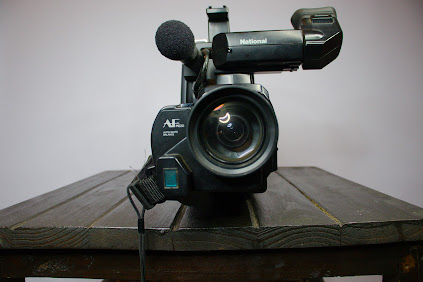













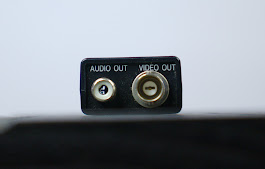
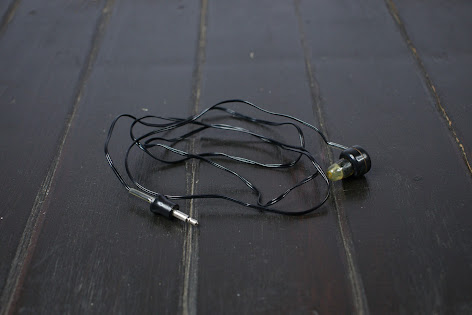













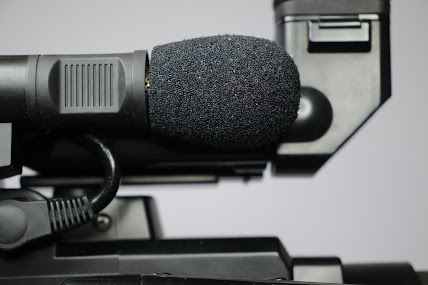



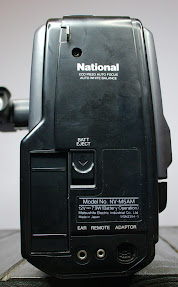










No comments:
Post a Comment